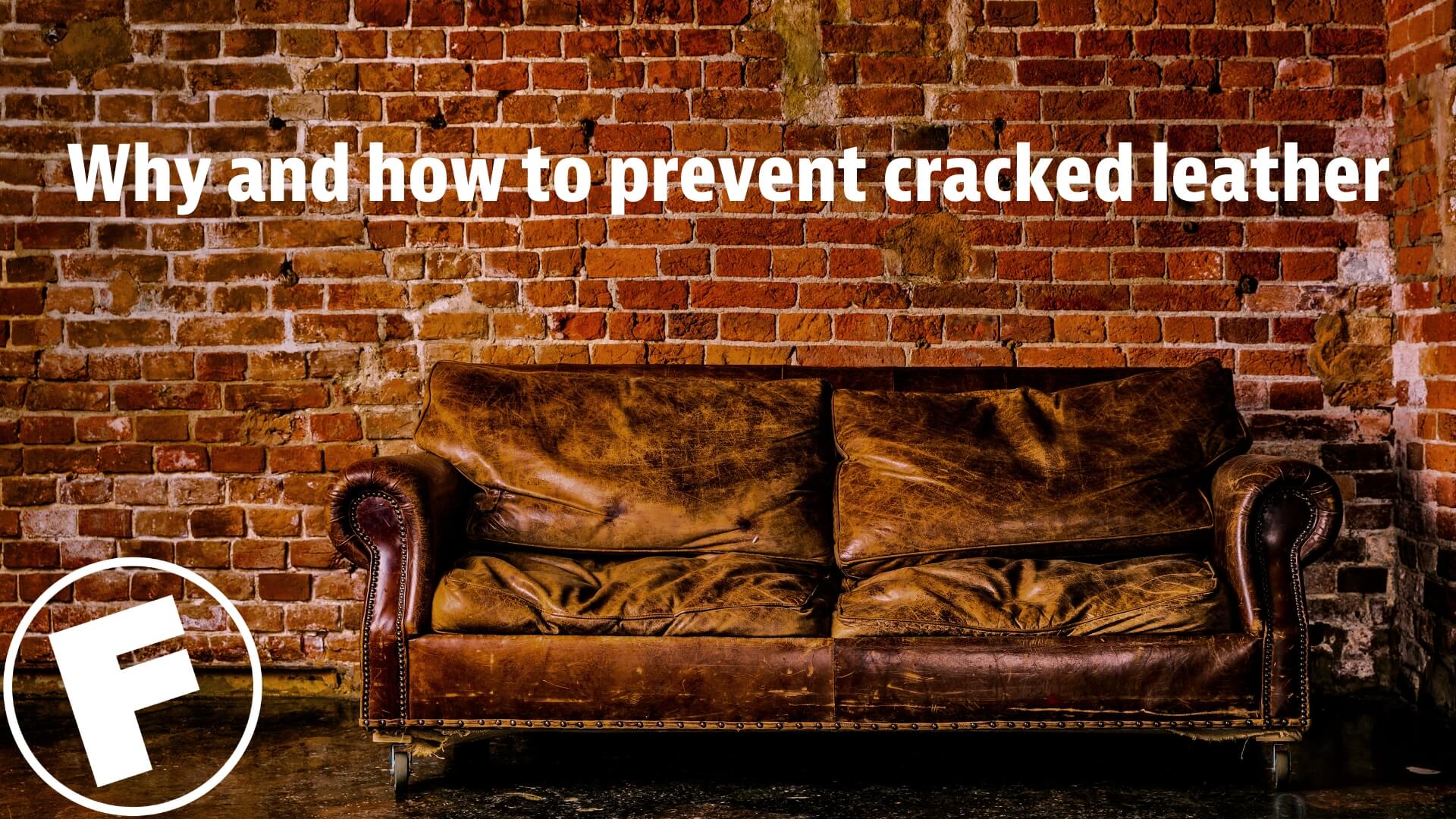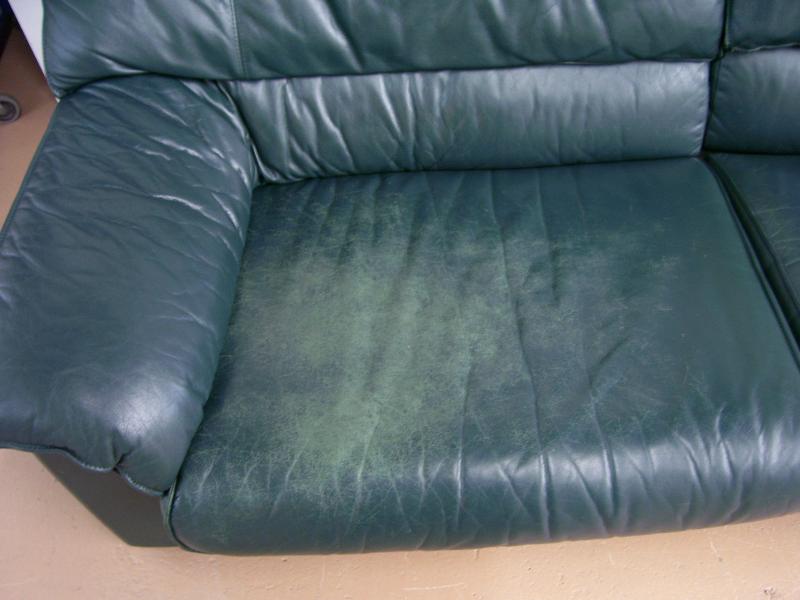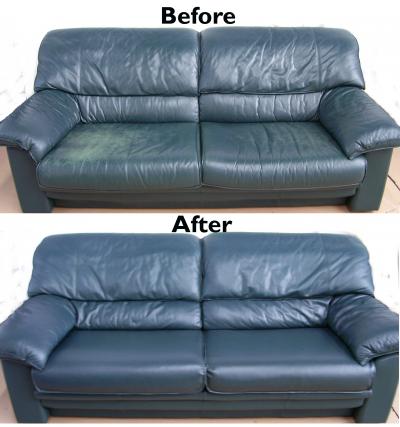Why Does Leather Crack? A Simple Guide to Preventing Cracking in Your Leather Products
You know that heart-sinking moment when you gaze upon your favorite leather couch, only to find it’s started to look more like an arid desert landscape than the smooth, supple masterpiece it once was?
This doesn’t mean you need to give up on your favorite sofa. Let’s take a look at why leather cracks and how to keep your favorite perch—as well as any other valued leather seats, leather bags, wallets, etc.—in good condition.

Why does leather crack?
Leather cracks primarily due to the loss of its natural oils and moisture, which causes it to lose its flexibility and suppleness.
Our estimate is that 95% of cracking in fully finished leather starts with one of these two culprits:
- A manufacturer problem: To make fully-finished leather, manufacturers put a layer of dye and a protective top coating on the hide almost like paint goes on drywall. Leather has a lot of give and will stretch and move as people sit and slide around on it.
If the manufacturer doesn’t stretch the leather properly before they put on the dye and protective top coating, the leather will quickly stretch more than the dye can handle, and the coating will crack. - Body oil and dirt: Leather is incredibly porous, and it soaks up oil whenever it touches it. Believe it or not, the most common source of these problems is your own bare arms, legs, neck, and hair.
Dirt also gets soaked into the top coating of leather as it gets worn down. As you sit, stand, and move around, that dirt and oil becomes abrasive, and it breaks down surface dye which will eventually lead to visible cracks at the surface.
While those are two of the fundamental reasons why leather might crack, there are many other environmental or maintenance issues that could take place:
- Drying Out: Just like human skin, leather requires moisture to stay soft and flexible. Over time, if not properly conditioned, leather can lose its natural oils and become dry.
- Exposure to Sunlight and Heat: Prolonged exposure to direct sunlight or heat can cause leather to dry out and fade. UV rays can break down the fibers, leading to brittleness.
- Age: As leather ages, it loses some of its natural oils and can become more susceptible to cracking, especially if not regularly conditioned.
- Lack of Maintenance: Leather requires regular cleaning and conditioning. Without proper care, dirt, and oils can build up, breaking down the leather’s fibers and making it more prone to cracks.
- Improper Storage: Storing leather items in overly dry or humid environments can either strip them of moisture or introduce excessive moisture, leading to mold or mildew. Both extremes are harmful.
- Excessive Stress: Frequently bending, folding, or stretching leather items, like shoes or wallets, can strain the leather and lead to cracks over time.
- Exposure to Harsh Chemicals: Some chemicals can strip leather of its natural oils or damage its fibers, making it more likely to crack.
With that in mind, here are some practical strategies to prevent your leather from meeting such a woeful fate.
Don’t be a crackhead! Your leather-cracking prevention cheatsheet
Cracking in leather items is usually a result of dryness, excessive exposure to direct sunlight, age, and lack of maintenance.
Regularly examining your favorite leather products, staying on top of said maintenance, and using dedicated, high-quality leather cleaners and/or conditioners the best means for prevention.
Use this cheat sheet to help you keep your leather items in top shape and prevent them from cracking:
Understand Your Leather
Different types of leather require different care:
- Full-Grain: The most natural type, with visible grains and imperfections.
- Top-Grain: Sanded and finished to remove imperfections, slightly less durable than full-grain.
- Split-Grain: Removed from the bottom of the hide; often used for suede.
- Bonded: Made from leftover scraps and fibers bonded together.
- Faux Leather: Synthetic and much cheaper, faux leather is less durable and tends to crack or peel much more rapidly than genuine leather.
Know your leather type to provide the most appropriate care.
Clean Regularly
Dirt and oils can break down the fibers in leather, leading to cracks over time. Use these steps to clean:
- Dust off using a soft brush.
- Wipe down with a damp cloth.
- For deeper cleaning, use a leather cleaner. Always test on an inconspicuous spot before applying to the entire surface.
Condition Regularly
Conditioning replenishes the natural oils in leather:
- Use a quality leather conditioner that doesn’t contain harmful chemicals or silicones.
- Apply in small amounts using a soft dry cloth.
- Rub in a circular motion on the surrounding leather until fully absorbed.
- Allow to dry naturally.
Avoid Excessive Sunlight and Heat
Just as with human skin, prolonged exposure to direct sunlight can dry out the leather and cause it to crack, especially when it goes from damp to super dry in an extremely short amount of time.
- Store leather items away from direct sunlight.
- Avoid placing near heaters or vents.
- If drying wet leather items, do so away from direct heat sources.
Protect Against Spills and Stains
- Wipe off spills immediately to prevent them from setting.
- Consider using a leather protector spray with a clean, microfiber applicator to create a barrier against stains and water. (Again, test first on an inconspicuous area.)
Store Properly
- Use shaped hangers for leather jackets to maintain their shape.
- Fill leather shoes or bags with paper or shoe trees to retain shape.
- Don’t store leather items in plastic bags; use fabric bags to allow the leather to breathe.
- Keep leather furniture out of direct sunlight
Rotate Usage
If you have multiple leather items like shoes or bags, rotate their use. This allows each item to rest and regain its natural shape, reducing wear and tear.
Maintain Humidity Levels
In extremely dry conditions, leather can lose moisture and crack.
- Consider using a humidifier in dry climates or during winter.
- Don’t store leather in damp or wet areas, as this can lead to mold and mildew.
Act Fast on Cracks
If you notice small cracks:
- Clean the area gently with a clean cloth—and mild soap if that’s all you have on hand
- Apply a leather conditioner or cream to moisturize the leather.
- If cracks worsen or become deep, consult a professional leather repair specialist.
Regular Inspections
Regularly inspect your leather items for signs of dryness, discoloration, or minor cracks. Addressing issues early can prevent bigger problems later on.
Fibrenew is your go-to whenever in doubt
To be totally honest, if aniline or semi-aniline upholstery leather cracks, it’s often too far gone to be worth repairing. Now, this is not always the case, but when these leathers crack, it’s usually the result of problems that have been neglected or unnoticed for a long, long time. Fully-finished leather is different, though. Check out another of our blog posts for explanations of the most common types of upholstery leather.
Cracking of fully-finished leather is actually a very common problem that leather restoration experts can easily fix, but like most things with leather furniture, it’s easier (and cheaper) to take care of the problem before it really becomes a problem.
Remember, leather is a natural material and may show signs of wear over time. Regular care and maintenance can prevent further damage and prolong the life of your leather items.
Get in touch with Fibrenew today for all your leather repair needs, or to become an expert and join the family!
Cracked Leather FAQ
Why does leather crack?
Leather can crack when its natural oils diminish or evaporate over time, leading to a loss of flexibility. Environmental factors such as excessive heat, cold, and moisture, as well as neglect in care, can contribute to this.
How often should I condition my leather items to prevent cracks?
Typically, every 3-6 months, but this can vary based on the item’s use and the environment. If the leather feels dry or stiff, it’s a sign that it might need conditioning.
Can direct sunlight harm my leather goods?
Yes, prolonged exposure to direct sunlight can cause leather to fade, dry out, and eventually crack. Always store leather items away from direct sunlight.
My leather item got wet. What should I do?
Wipe off any excess water with a soft cloth and allow it to air dry naturally, away from direct heat sources. Once dry, condition it to restore its natural oils.
What kind of products should I use for cleaning and conditioning leather?
Always opt for products specifically designed for leather care. A gentle leather cleaner and a quality leather conditioner or cream are essential.
How can I protect my leather items from stains?
Using a leather protector can help. It provides a barrier against water, oils, and other potential stains. However, always test any product on an inconspicuous area first.
How should I store my leather bags or jackets to prevent cracking?
Store them in a cool, dry place, away from direct sunlight or heat sources. Avoid storing in plastic; instead, use cloth bags to allow the leather to breathe. For bags, stuff them with tissue paper or bubble wrap to retain shape.
Can I use oils like coconut oil or olive oil to condition leather?
While some people use natural oils on leather, they can sometimes darken the leather or cause inconsistency in color. It’s usually better to use products specifically formulated for leather conditioning.
Is humidity harmful to leather?
Both high and low humidity can be problematic. Excessive moisture can lead to mold, while too dry an environment can dry out the leather. Consider using a humidifier or dehumidifier when needed.
I have old leather that’s starting to show minor cracks. Can it be saved?
Remember, leather is a natural material, and with the right care, it can remain beautiful and durable for many years.




